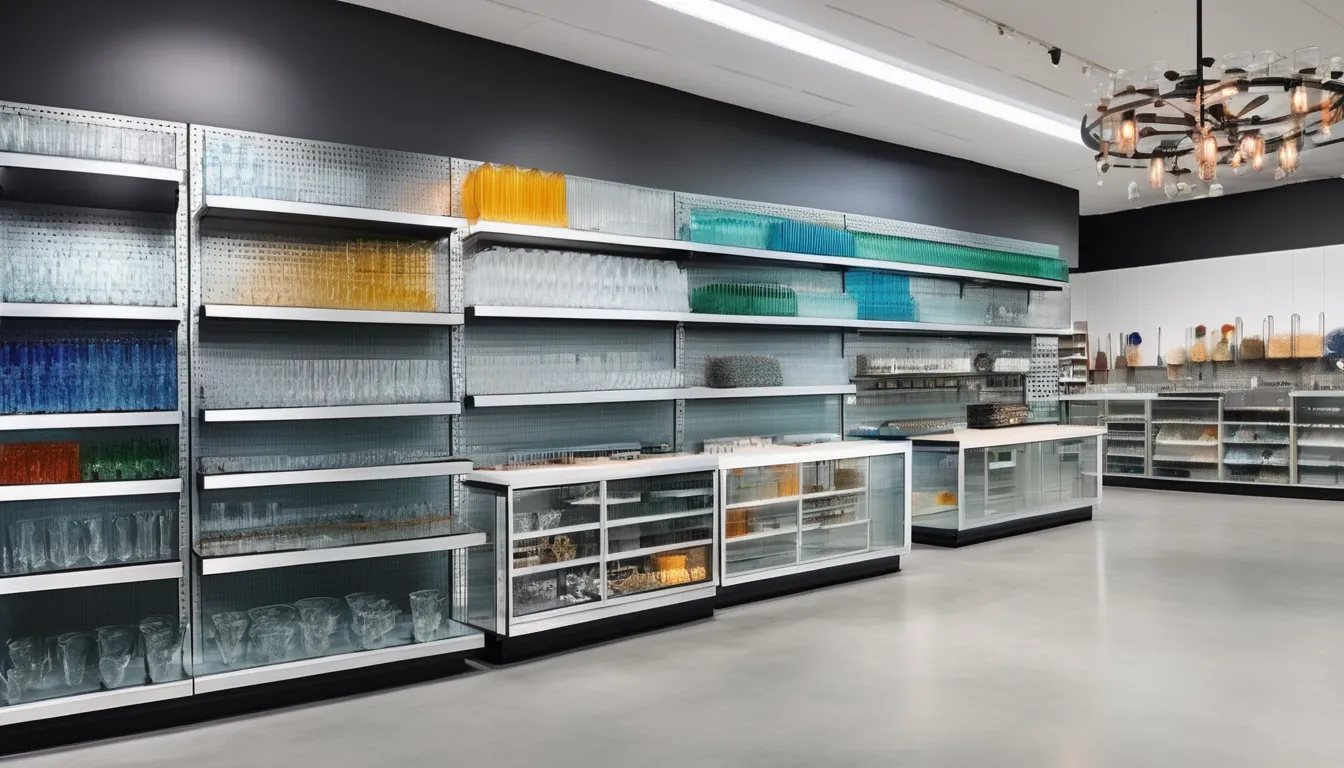When working with glass, you’re likely no stranger to its vast possibilities. You’ve probably encountered a multitude of colors, textures, and finishes that can elevate your projects from ordinary to extraordinary. However, you also know that choosing the right glass components can be overwhelming, especially with the numerous options available. You need to consider factors such as durability, thermal resistance, and cost to ensure your project meets its intended requirements. But what exactly are the essential glass components you should be working with, and how do you choose the right ones for your specific needs?
Types of Glass Components
Several types of glass components are used across various industries, each serving a unique purpose. You’ll find tempered glass, for instance, in architectural and automotive applications, where its enhanced strength and resistance to thermal stress are crucial.
Laminated glass is another type, known for its ability to hold together even when shattered, making it ideal glass railing spigot security and soundproofing purposes.
When it comes to electronics, you might encounter glass components like LCD glass, which is used in display screens, or glass substrates, used in semiconductor manufacturing.
In the medical field, you’ll find glass components like medical-grade borosilicate glass, used in equipment and pharmaceutical packaging. Each type of glass component has its own set of properties and characteristics that make it suitable for specific applications.
As you explore the world of glass components, you’ll discover more specialized types, such as fused silica glass, used in high-temperature applications, or photochromic glass, which changes color in response to light.
Understanding the different types of glass components will help you make informed decisions about your projects.
Choosing the Right Glass
When it comes to choosing the right glass for your project, you’ll need to consider a range of factors, from the specific application to the required properties and characteristics.
Different types of glass have unique benefits and drawbacks, so it’s essential to select the right one to achieve your desired outcome.
To make the right choice, consider the following factors:
- Color and clarity: Will your project require transparent, translucent, or opaque glass? Are there specific colors or hues you need to match?
- Durability and strength: Will your project be subject to heavy wear and tear, or will it be handled gently?
- Thermal resistance: Will your project be exposed to extreme temperatures, or will it be used in a stable environment?
- Cost and availability: Are you working with a limited budget, or do you have more flexibility to choose a premium glass option?
Glass Beads and Findings
Now that you’ve selected the right glass for your project, it’s time to think about the individual components that will bring your design to life.
Glass beads and findings are essential elements that can make or break the overall aesthetic of your piece. Beads come in various shapes, sizes, and colors, allowing you to create intricate patterns and designs.
You’ll want to choose beads that complement your glass choice, considering factors such as transparency, texture, and hue.
Findings, on the other hand, serve as the foundation for your design, providing a framework for your beads and glass components.
They include items such as clasps, earring backs, and head pins. When selecting findings, consider the style, durability, and finish that will best suit your project.
For instance, a silver-plated clasp may not be suitable for a project that will be exposed to water or harsh chemicals.
By choosing the right glass beads and findings, you’ll be able to create a beautiful and functional piece that showcases your craftsmanship.
With these components in place, you’ll be well on your way to crafting a stunning glass project.
Tubing and Rod Applications
[TEXT]:
Your glass project’s structural integrity and visual appeal can greatly benefit from the strategic use of tubing and rods.
These versatile components can be used to create a wide range of designs, from delicate ornaments to intricate sculptures.
Tubing and rods come in various shapes, sizes, and colors, allowing you to choose the perfect fit for your project.
When selecting tubing and rods, consider the following applications:
- Furniture and decorative accents: Use tubing and rods to create unique table legs, chair frames, or wall decorations that add a touch of elegance to any room.
- Jewelry making: Incorporate tubing and rods into your jewelry designs to create intricate pendants, earrings, or rings that showcase your creativity.
- Sculpture and art pieces: Use tubing and rods to create three-dimensional sculptures or abstract art pieces that showcase your artistic skills.
- Lighting fixtures: Design unique lamp shades or chandeliers using tubing and rods to add a touch of sophistication to any space.
Safety and Handling Considerations
Safety and Handling Considerations
How safely do you handle the glass tubing and rods in your workshop. Handling these components requires attention to detail and caution to prevent injuries and damage.
Always wear protective gear, including gloves, safety glasses, and a face shield, when working with glass. This will shield you from sharp edges and flying shards in case of breakage.
When handling glass tubing and rods, ensure you have a secure grip to prevent dropping or slipping. Use a stable work surface and keep the area clear of clutter and tripping hazards.
Avoid wearing loose clothing that may get caught in equipment or snag on sharp edges.
When cutting or grinding glass, work in a well-ventilated area to prevent inhaling dust and particles. Use a dust mask or respirator to minimize inhalation risks.
Store glass components in a designated area, away from heat sources and flammable materials. Labeling and organizing your storage area will also help prevent accidents and make it easier to find the components you need.
Conclusion
You’ve now got a solid grasp of essential glass components for your projects. By choosing the right type of glass, you’ll ensure your creations are not only aesthetically pleasing but also functional and safe. Whether you’re working with glass beads, tubing, or other components, remember to handle them with care and follow safety guidelines. With this knowledge, you’re ready to craft clarity and bring your glass projects to life.


